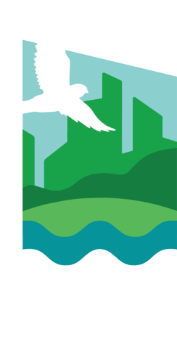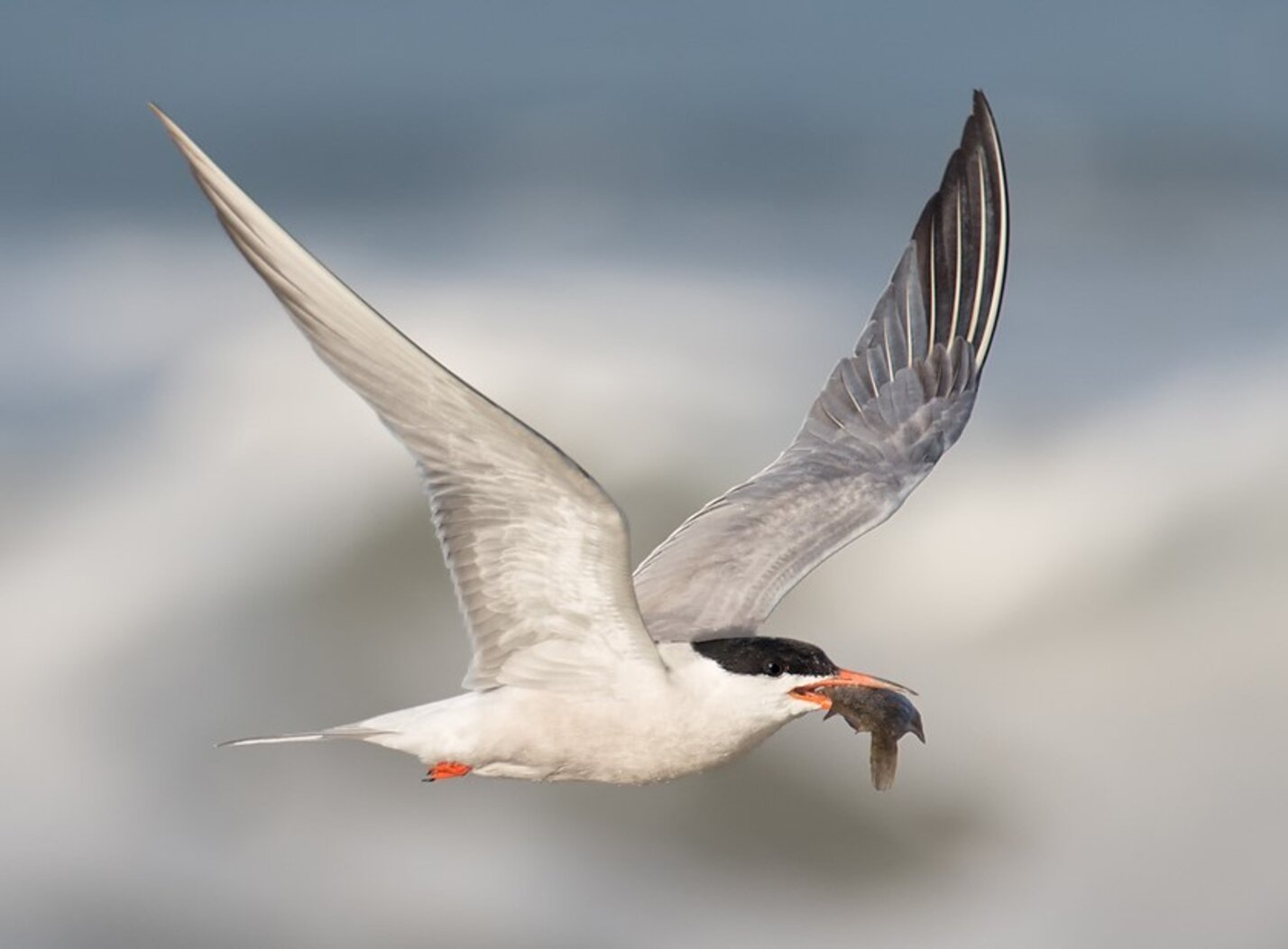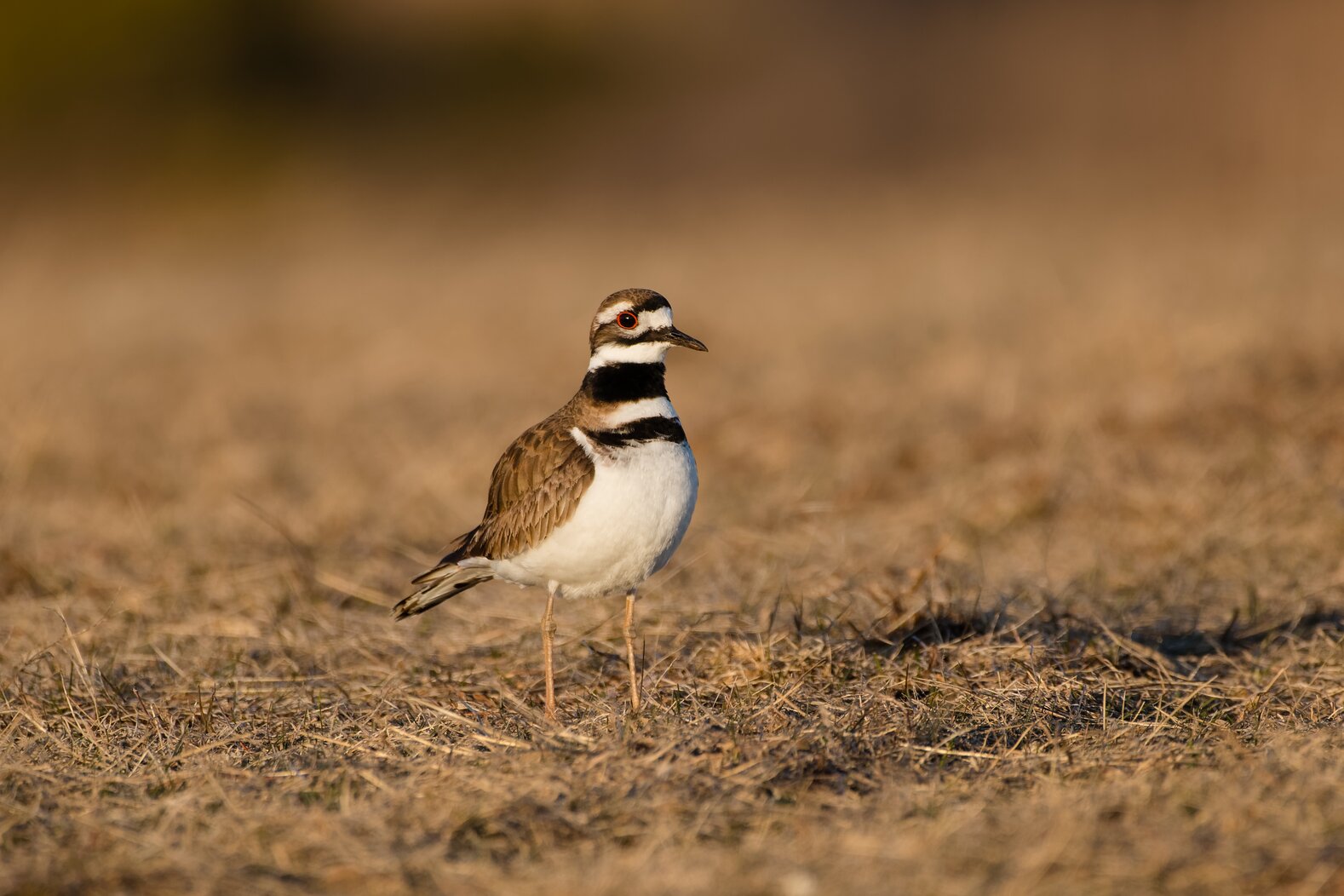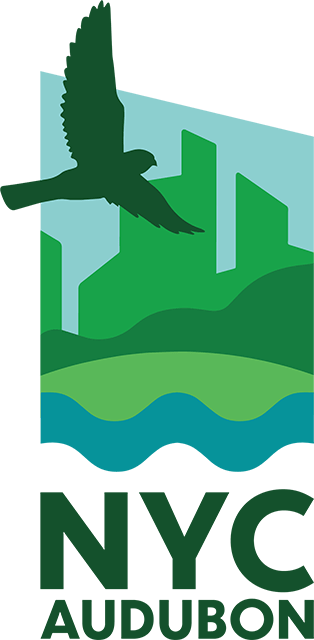Governors Island
The sun sets over the Hills of Governors Island. Photo: Justin Kiner/CC BY-NC-ND 2.0
Birding Highlights by the Season
(no star = birding is not very productive, ✸ = somewhat productive, ✸✸ = productive, ✸✸✸ = very productive)
Spring Migration ✸✸✸
Woodpeckers; flycatchers; warblers, tanagers, orioles, and grassland birds
Summer ✸✸
Nesting Common Tern, Herring and Great Black-backed Gulls, Yellow-crowned Night-Heron, Fish Crow, Eastern Kingbird, Warbling Vireo, Barn and Tree Swallows, Gray Catbird, Yellow Warbler. Foraging Laughing Gulls, Chimney Swifts..
Fall Migration ✸✸✸
Raptors; freshwater sandpipers; woodpeckers; flycatchers; grassland birds, warblers, and other songbirds
Winter ✸✸
Owls, accipiters, gulls, diving birds including Bufflehead, mergansers, and loons; mixed songbird feeding flocks
Year-Round Highlights
Gulls, Red-tailed Hawk, American Kestrel, Fish Crow
Get Oriented
View a map of Governors Island.
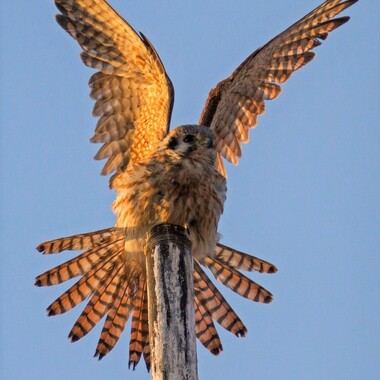
American Kestrels hunt year-round in the open areas of Governors Island. Photo: François Portmann
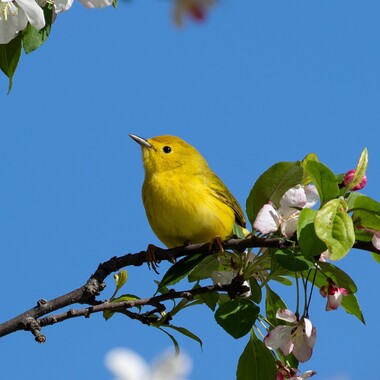
Yellow Warblers nest in the Hammock and Hills areas of Governors Island. Photo: Ryan Mandelbaum
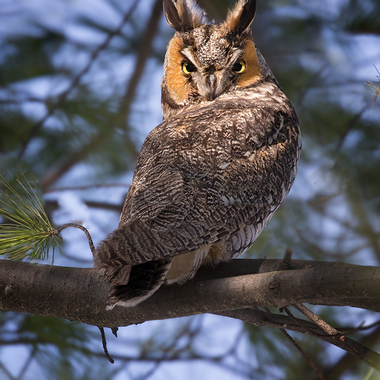
Long-eared Owl has been found roosting on Governors Island. Photo: David Speiser
This large natural island south of Manhattan (and part of its borough) was known to the Lenape people as Pagganuck, or “Nut Island,” because of its rich collection of Chestnut, Hickory, and Oak trees, and is thought to have been used as a seasonal foraging and hunting ground. It has been substantially transformed over the past few centuries, but its placement in the middle of the upper harbor continues to make it a natural stopover spot for migrating birds. As the largest of our Harbor Heron islands, it also hosts nesting Common Terns, gulls, and one or two pairs of Yellow-crowned Night-Herons.
Since before the American Revolution, the island has served various military purposes under the Dutch, British, and U.S. governments, and today hosts three historical military forts dating to the early 1800s—Fort Jay, Castle Williams, and the South Battery. In the 20th century, in addition to serving a military role during both World War I and II, the island was the site of notable occurrences including the take-off of Wilbur Wright’s first over-water flight, in 1909, and the last meeting between President Ronald Reagan and USSR General Secretary Mikhail Gorbachev, in 1988.
 "}" data-trix-content-type="undefined" class="attachment attachment--content">
"}" data-trix-content-type="undefined" class="attachment attachment--content">In 1912, the island’s southern end was expanded significantly by the addition of rocks and soil excavated during the creation of the Lexington Avenue Subway line; this addition expanded the island to its current 172 acres. The island’s final military use as a Coast Guard installation ended in 1995. Since that time, the island has become a combination of national monument and New York City parkland, including ever-expanding offerings of nonprofit, artistic, and recreational opportunities. (Among them is NYC Audubon’s seasonal nature center at Nolan Park House 17.)
Much of the island has been preserved as green space, including extensive native plantings. Governors Island eBirders have documented over 216 species here just in the past few years, including Snowy, Long-eared, and Northern Saw-whet Owls, Swainson’s Hawk, Glaucous and Iceland Gulls, Western Kingbird, Eastern Bluebird, Bobolink, Blue Grosbeak, and Dickcissel, and over 30 warbler species.
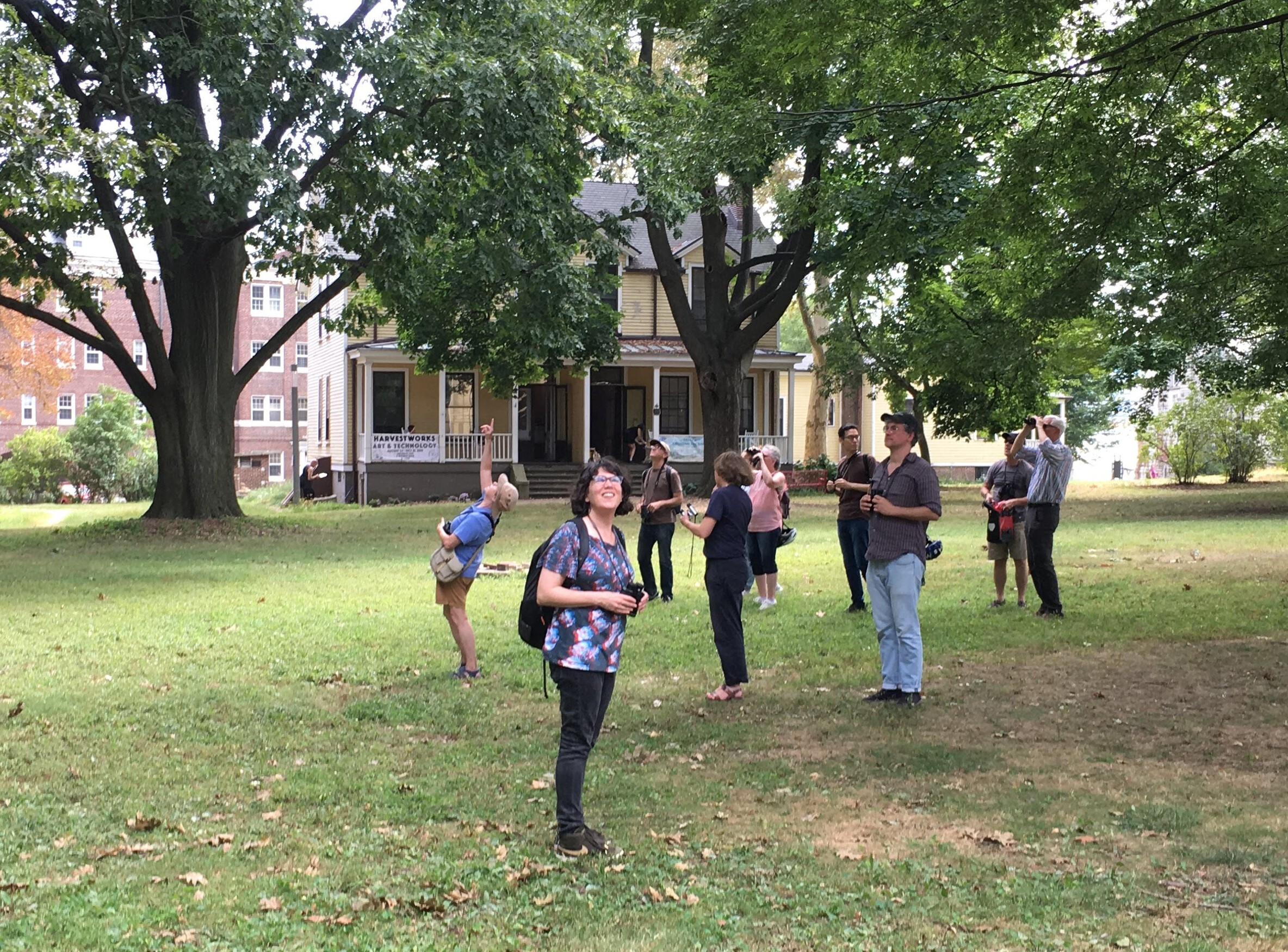
NYC Audubon Guide Annie Barry points out a songbird in the trees high above Nola Park 17. Photo: NYC Audubon
Nolan Park and the NYC Audubon Nature Center
A short walk southwest from the Manhattan ferry terminal (and northeast from the Brooklyn terminal) brings you to Nolan Park House 17, home to NYC Audubon’s seasonal nature center (normally open from May through September). Borrow binoculars and participate in one of our free guided bird walks, or get oriented and strike out on your own. The center’s other programming includes conservation displays, a children’s room with books and activities, bird-inspired artwork, and open artist studios. Find more details and updates on house hours, bird walks, and special events.
Nolan Park itself is a beautiful “campus” of open areas and trees. Its yellow homes once housed high ranking officers in the Army and Coast Guard. It now hosts many bird species year round. During migration, scan the trees and grounds for migrating warblers, kinglets, thrushes, orioles, tanagers and more.
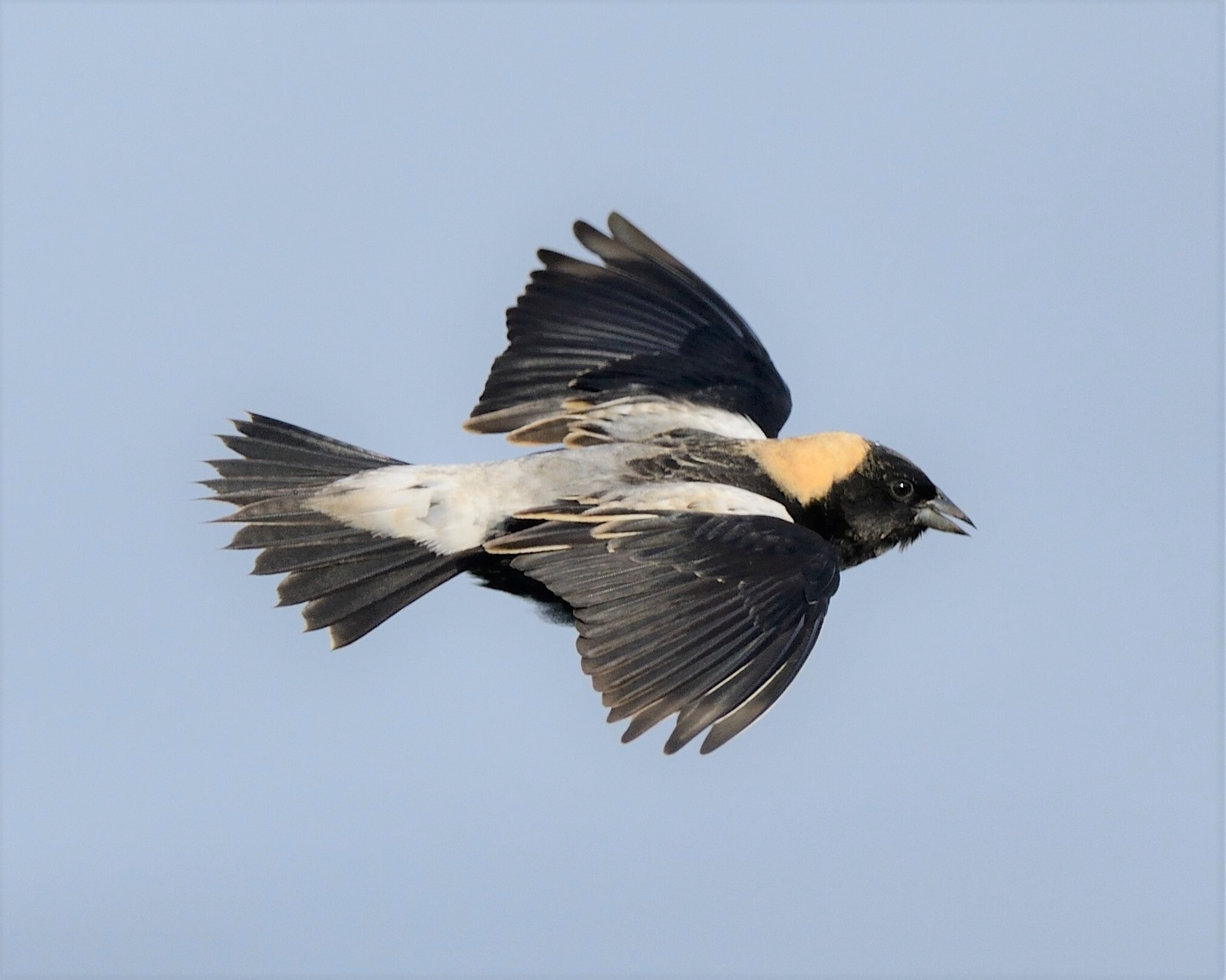
Bobolinks sometimes stop by the open areas of Governors Island during migration. Photo: JanetandPhil/CC BY-NC-ND 2.0
Fort Jay and Parade Ground
During migration, check the open areas around Fort Jay (built in 1794 upon fortifications from the American Revolutionary War) for grassland birds such as Bobolink, Eastern Meadowlark, and American Pipit, as well as warblers and mixed flocks of sparrows. Scan the skies here for raptors, particularly during fall migration. Eastern Kingbird may nest in this area.
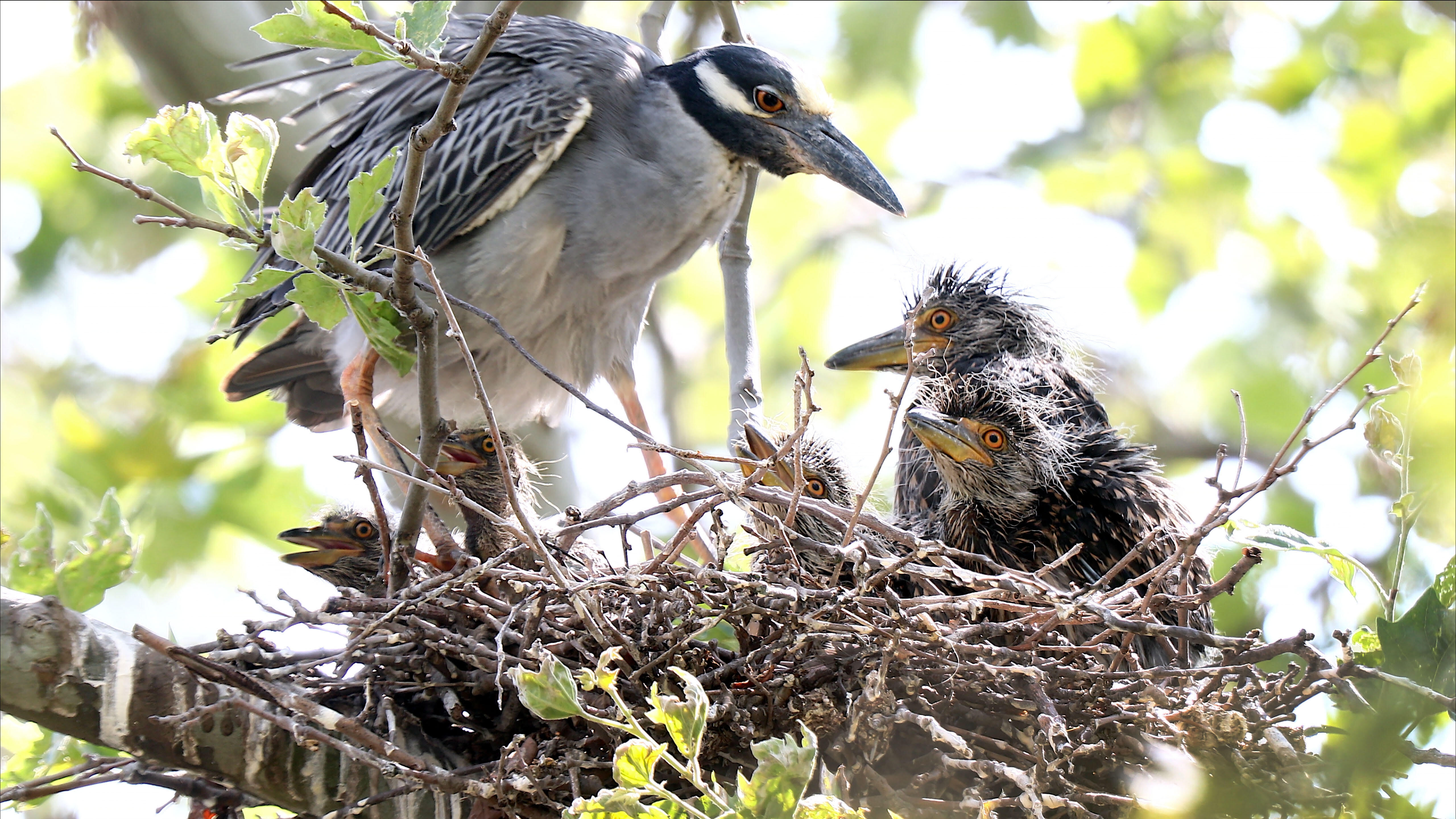
A Yellow-crowned Night-Heron stops to feed its five chicks on Governors Island. Photo: Bruce Yolton
Colonels Row and Harbor School
Colonels Row, made up of residences dating to the late 19th century, is flanked by several rows of mature trees that attracted migrating land birds such as woodpeckers, flycatchers, warblers, and orioles. This is also a popular spot for Fish Crows, which nest here in good numbers.
In recent years, this area has also hosted one or two pairs of an unexpected breeding species: Yellow-crowned Night-Heron. From May to August, check the London Plane trees east of the entrance to the Urban Assembly New York Harbor School for the birds’ flattish, circular nest of large sticks, usually at least 15 or 20 feet up. If you’re patient, you may get to see the adults arrive and feed their scruffy, brownish nestlings.
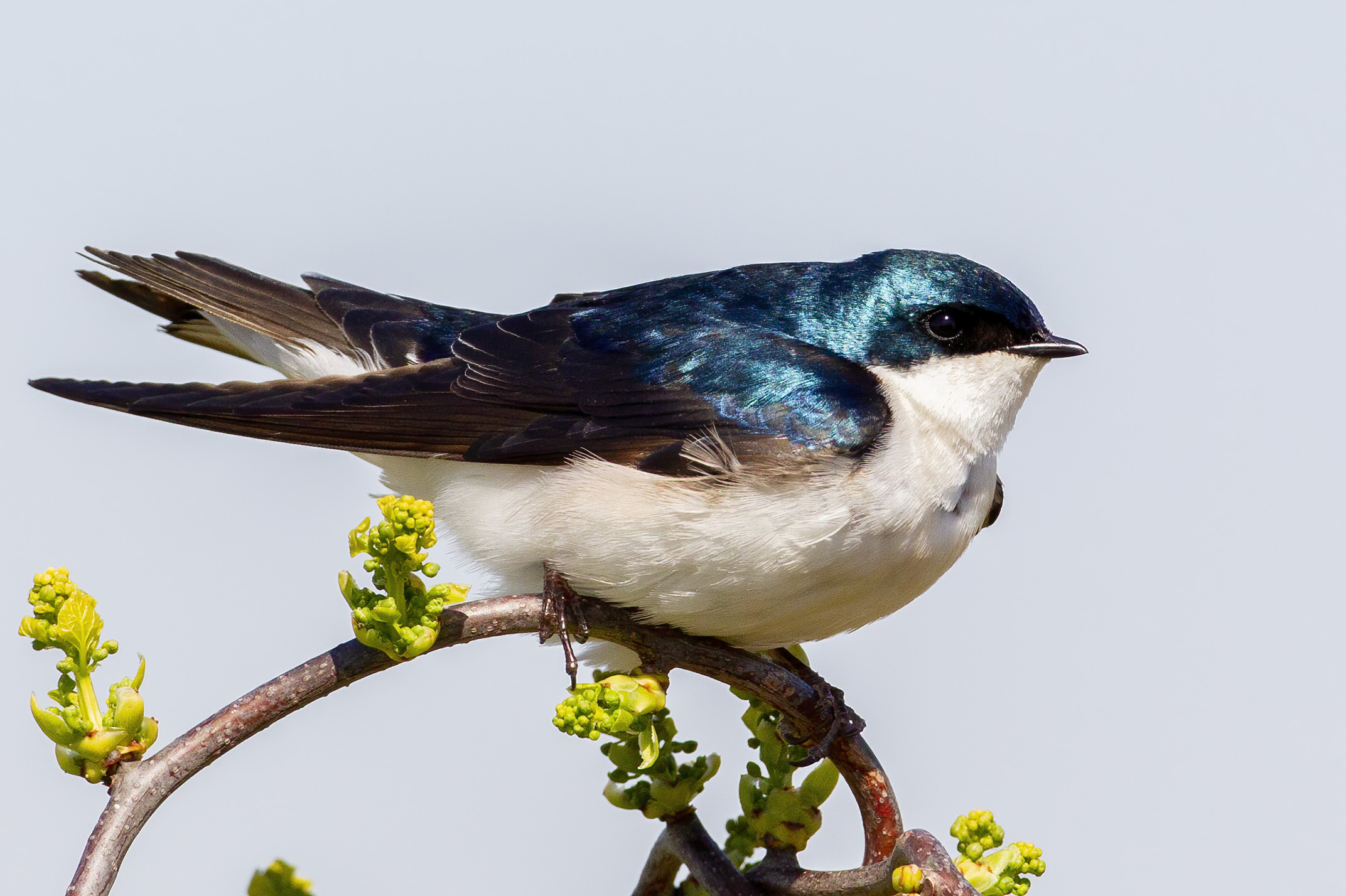
During nesting season, Tree Swallows are often seen around the Hammock Grove and Hills of Governors Island. Photo: Lloyd Spitalnik
Hammock Grove and Hills
South of Colonels Row is an area of native plantings and meadows crossed by several paved trails (The area is named for several hammocks that are available here for lounging.) This habitat is attractive to warblers, sparrows, and other songbirds during migration. During the breeding season, check this area as well as the Hills for nesting species such as Tree Swallow, Red-winged Blackbird, Northern Mockingbird, Gray Catbird, Yellow Warbler, and Song Sparrow.
The Hills are a manmade landscape complete with a hiking trail to the top (and a slide back to the bottom, if you choose). The scattered trees in fields around this area may attract many kinds of land birds during migration; check overhead for swallows and Chimney Swifts.
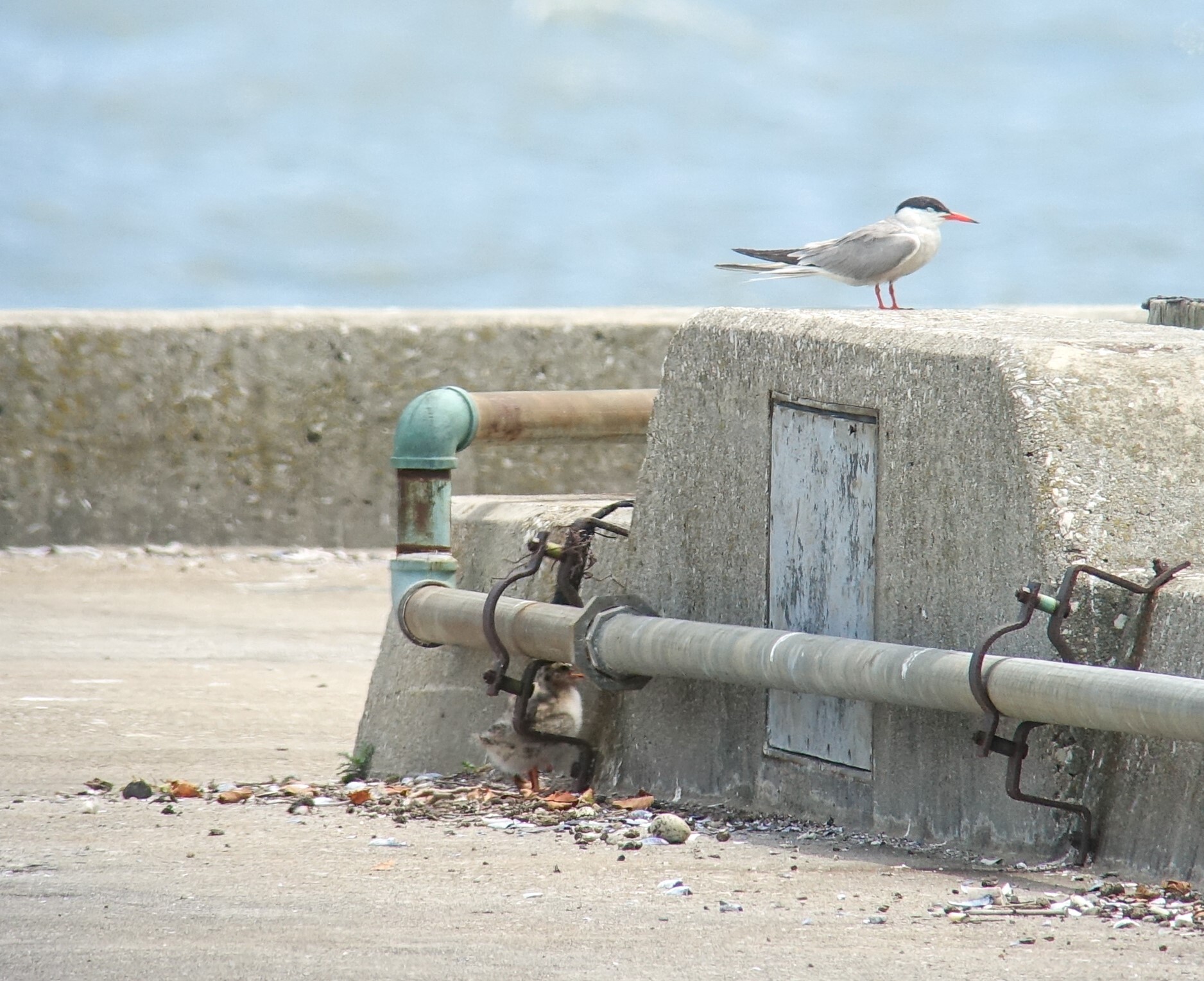
Southeast Coast: The Piers and Buttermilk Channel
Legend has it that Buttermilk Channel, which separates Governors Island from Brooklyn, was named for the cattle that were led across it in colonial times, through waters rough enough to churn their milk into buttermilk (no one knows for sure!). Today, three piers jut into the channel, and in recent years have hosted nesting Common Terns and Herring Gulls. The piers, named after their letter-like shapes (from north to south, Y, T, L), are known as Yankee, Tango, and Lima. (The names are drawn from the International Radiotelephony Spelling Alphabet.) Yankee pier, part of which has collapsed into the channel, is used by the Brooklyn Ferry.
The Tango and Lima piers, which are not accessible due to safety concerns, continue to host nesting Common Terns, though the populations shift from year to year. The birds are most plentiful from May to early September, and may be seen from the waterside trail (“Craig Rd S.”). A spotting scope is helpful. NYC Audubon’s has enhanced the Lima pier habitat with oyster shells; this enhancement was followed by an increase in the nesting tern population. (Read more about work with Common Terns. And don’t miss NYC Audubon’s “It’s Your Tern” Festival, which takes place on Governors Island each June.)
Northwest of Tango Pier, check a fenced in area where a large pool/puddle sometimes attracts waterfowl and shorebirds. Killdeer may nest in this area. Also check the rooftops of maintenance buildings inland from Tango and Lima; from May through the summer, you may spot nesting Herring and Great Black-backed Gulls and their brownish young.
 "}" data-trix-content-type="undefined" class="attachment attachment--content">
"}" data-trix-content-type="undefined" class="attachment attachment--content">When to Go
See "Birding Highlights by the Season" above; the eBird links below also may be helpful. To learn about bird migration times and get other timing tips, see the When to Bird in NYC guide on our Birding 101 page.
For park operating hours, see the “Directions and Visiting Info” section, below.
eBird
View eBird hotspot records for Governors Island to explore recent bird sightings, species bar charts, a map of other nearby hotspots, and more.
Personal Safety
Governors Island is well frequented when open to the public and a safe place to bird. On days when the island is crowded, take care while walking on pathways shared with cyclists. (Vehicle traffic is limited to island staff vehicles.) Ticks are not generally a problem but are sometimes found in the Hammock Grove.
Guided Bird Walks
NYC Audubon leads regular walks on Governors Island from our seasonal nature center at Nolan Park House 17. Learn more.
Directions and Visiting Info
View the Trust for Governors Island webpage for operating hours, directions, a park map, and additional background information.
Acknowledgments
Thanks to those who provided local birding expertise for this page: Annie Barry (2020).
